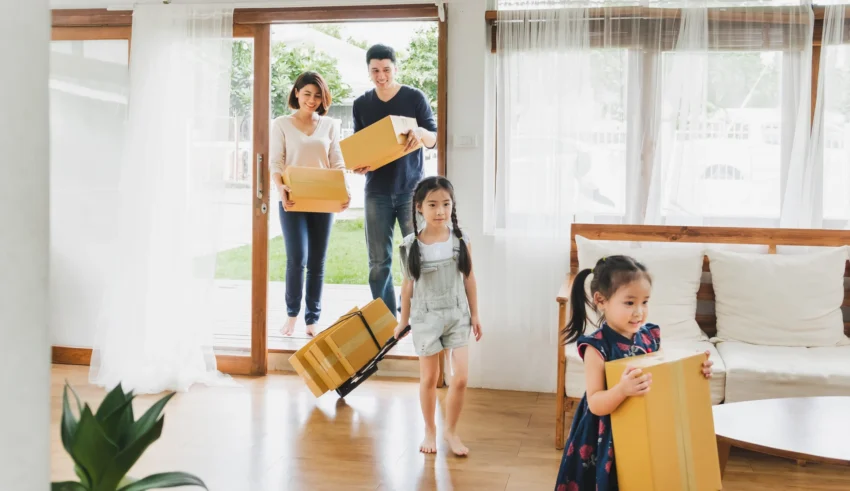
There’s a gap that nobody really prepares for when moving internationally – the weeks or months between leaving one country and getting belongings back in another. Most people know intellectually that their stuff will take time to arrive, but the reality of actually living without most possessions for 8 or 12 weeks hits differently than expected. It’s not quite camping, not quite minimalism, just an odd in-between state that requires adjustments most people don’t anticipate.
Table of Contents
The First Week Feels Like an Extended Vacation
Initially, living with just what fits in suitcases doesn’t feel too bad. It’s almost like being on a long trip – washing the same clothes, using basic supplies, keeping things simple. There’s even something freeing about not having all the usual possessions around.
But this honeymoon period doesn’t last long. By week two or three, the novelty wears off and the inconveniences start adding up. The same five outfits get boring. Not having the right kitchen tools makes cooking frustrating. Missing that favorite blanket or the good pillow starts affecting sleep. All the small comforts that normally go unnoticed become very noticeable in their absence.
Furniture Shopping on Credit Cards Gets Expensive
Here’s what catches people off guard: the temptation to buy replacement items while waiting for shipments to arrive. Sleeping on an air mattress for a few nights is manageable, but doing it for two months feels impossible. So people buy cheap furniture to use temporarily, which feels wasteful when the real furniture is somewhere on the ocean.
The costs add up fast. A temporary bed, table, chairs, lamps – even buying cheap versions of these items can easily run $500 to $1,000. Kitchen supplies, towels, basic household items – another few hundred dollars. This is money spent on stuff that becomes redundant once the actual belongings arrive.
Some people justify it by planning to donate or resell the temporary items, but that rarely works out as cleanly as hoped. Selling used furniture takes time and effort. Donating it requires transportation. Often the temporary stuff just ends up creating more hassle during an already chaotic period.
The length of this uncomfortable gap depends partly on the shipping method chosen. Options like the Seven Seas Worldwide MoveCube® tend to have more reliable schedules than waiting for consolidated containers to fill up, which can shave weeks off the waiting period. But even with the most efficient shipping, there’s still going to be some stretch of time living without most belongings – it’s just a question of whether it’s six weeks or twelve.
You Discover What You Actually Need vs Want
Living with limited possessions for weeks provides an unplanned experiment in minimalism. It becomes very clear which items were genuinely useful and which were just taking up space in the old place. That bread maker that seemed essential? Turns out it’s perfectly manageable without it. The extensive book collection? A library card fills that gap just fine.
But then there are the items whose absence creates real problems. Not having the right work supplies affects productivity. Missing sports equipment or hobby materials leaves gaps in how free time gets spent. Comfort items – the things that make a space feel like home – turn out to matter more than expected.
This clarity is useful for future decisions about what to own, but it doesn’t make the present situation more comfortable. Knowing that something isn’t technically necessary doesn’t eliminate the frustration of not having it when it would be genuinely helpful.
Kids Struggle More Than Adults
Adults can usually cope with the temporary inconvenience of limited belongings. Kids have a harder time understanding why their toys, books, and familiar things aren’t available. Explaining that their stuff is “on a boat somewhere” doesn’t really comfort a six-year-old who wants their favorite stuffed animal right now.
Families end up prioritizing kids’ essentials in luggage, which means adults have even less space for their own items. Parents wear the same three outfits for months so their children can have more clothes and a few beloved toys. The sacrifice makes sense, but it doesn’t make the experience more pleasant.
School supplies, sports equipment, musical instruments – if these shipped with the household goods, replacements need to be purchased temporarily. This is another area where the costs of the gap period add up in ways that weren’t budgeted.
Entertainment and Hobbies Get Put on Hold
Books, games, craft supplies, sports gear, musical instruments, art materials – for people whose downtime revolves around specific hobbies, the waiting period feels particularly empty. Digital entertainment fills some gaps, but it’s not the same as having the familiar activities that normally provide relaxation and enjoyment.
This is when people realize how much their possessions connect to their identity and quality of life. Someone who reads physical books every evening has to adjust to e-readers or libraries. Someone who paints needs to either buy new supplies or take a forced break from their creative outlet. The person who unwinds by cooking elaborate meals gets stuck with a limited kitchen setup.
These adjustments work, but they create a sense of being in limbo – not quite settled, not quite comfortable, just waiting for normal life to resume once the stuff arrives.
The Arrival Day Is Both Relief and Chaos
When belongings finally arrive, there’s genuine relief followed immediately by a new problem: suddenly having way too much stuff crammed into temporary living spaces. All those boxes that need unpacking. The furniture that has to be assembled. The decision about what to do with the temporary items purchased during the gap.
Unpacking after an international move is exhausting under any circumstances, but doing it after months of deprivation creates a weird mix of emotions. Joy at seeing familiar things again. Overwhelm at the sheer volume of boxes. Confusion about why some of these items were shipped at all now that living without them proved manageable.
Planning for the Gap Makes It Easier
Knowing this in-between period is coming allows for better preparation. Packing strategic items in luggage – the things that will be missed most – helps. Having a realistic budget for temporary necessities prevents financial stress. Setting expectations that life won’t feel normal for a while reduces the frustration.
Some people intentionally embrace the minimalist period, using it as a chance to reset habits and rethink their relationship with possessions. Others just grit their teeth and count down the days until the shipment arrives. Either approach works as long as the gap is acknowledged and planned for rather than treated as an unexpected inconvenience.
The reality is that living without most possessions for months is awkward and sometimes frustrating, but it’s also temporary and manageable. It’s just one more adjustment in the long list of adjustments that come with moving countries – not the hardest part, but definitely not the easiest either.














